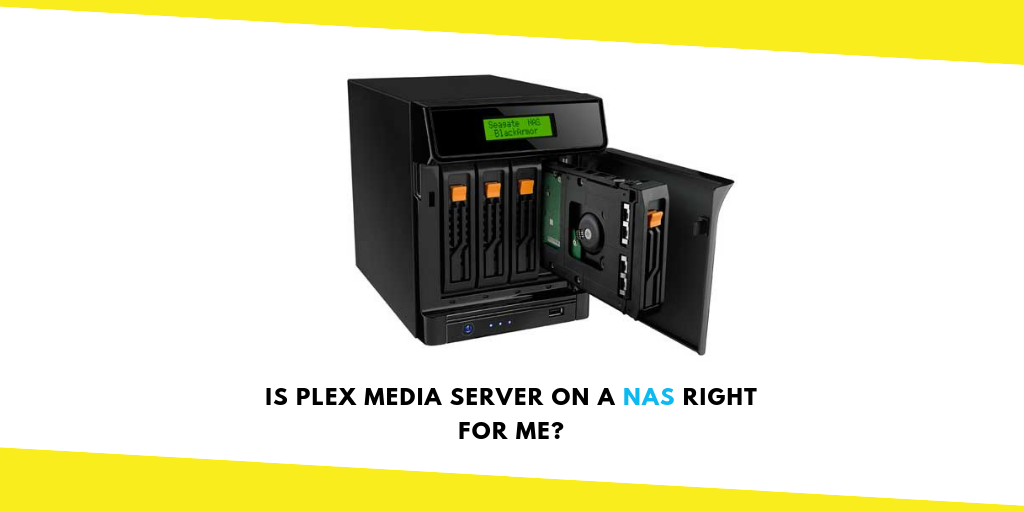Is Plex Media Server on a NAS Right for Me?

A variety of options are available for the people in today’s world to centralize their media files. Out of those options, getting a Plex Media Server on NAS has received a lot of attention. Before you go ahead with this option, it is better if you can do a background research and figure out whether it is a good option available out there for you to consider or not. Otherwise, there is a high possibility for you to encounter a lot of hassle and frustration in the long run.
Ask these two questions first
Before you go ahead and get your hands on Plex Media Server on NAS, you will need to ask the below mentioned questions from yourself. Then it will be an easy task for you to determine whether it is a good option to go ahead with or not.
Are you planning to use the Plex Media Server only for storage purposes?
As the first thing, you need to ask whether you are going to get a Plex Media Server on NAS only for your storage purposes. In this kind of a situation, there isn’t anything specific to Plex, which can create an impact on the NAS device that you purchase. Therefore, you will be provided with the freedom to go ahead with any brand, which is in a position to hold the specific amount of data that you want.
Are you planning to transcode media on Plex app?
If you are planning to transcode media on the Plex apps, you will need to look for the best NAS for Plex transcoding. This can be quite tricky and you should be careful when making a decision.
In this kind of a situation, you will need to go ahead with a NAS device, which has an x86 CPU. In addition, you need to make sure that the CPU you get is fast enough in order to transcode the media files. Otherwise, you will have to face a lot of issues when you store media content on it. You should also make sure that it is a supported ARM model.
For the ARM models, it is important to make sure that the format of media files match perfectly well with the formats of media files that your clients are capable of playing on their devices. When the transcoder is not available, you will run into a series of issues when you are accessing and watching media content remotely. As you can sense, there should be a quality internet connection with a decent bandwidth in order to stream media content with the full bitrate. With that, it is possible to overcome most of the challenges with streaming.
Most importantly, you need to understand that compatible media content would also need to go through transcoding. This can often take place when subtitles come into play. For most of the Plex apps that you use, you will need to burn in the subtitles to let the server stream them. That’s where transcoding comes into play. Moreover, transcoding is essential for remote access as well. If you are planning to access the server outside your home, you will run into a series of struggles when streaming content in the maximum quality. In this kind of a situation, the server will need to transcode content and create a lower quality version. Otherwise, it would not be possible to stream the content without buffering.
Media and transcoding
You should have a clear understanding on media and transcoding before you make a decision to get your hands on a Plex Media Server on NAS. Transcoding can simply be defined as the process, where media files are being converted from one format to another. For most of the applications, this is done by the playback device.
The Plex Media Server has got the ability to analyze the media content that is being added into the library. Then it will detect the specific format of the media file and other related details, such as bitrate and encoding.
When you play media content on a device that has Plex, you can expect the below mentioned steps to take place.
Prior to playing content, the Plex app would ask for media information from the server. The Plex app would use the information that it gets from the server, along with the current settings, such as direct stream settings and stream quality in order to come up to a decision whether media content can be played directly or not. If not, the Plex will need to seek assistance from the server.
If the Plex is in need of help, the server would go ahead and transcode media content accordingly into an appropriate format. Then the Plex app will be able to play the content. The media content will then play within the Plex app. It would continue to play until the CPU is doing all the transcoding work.
If you are okay with this process of transcoding and if you have all the resources needed to facilitate it, Plex Media Server on NAS will be a good option available for you to consider. But before you make the final conclusion, you are encouraged to double check the CPU in the NAS device.
CPU in your NAS device
When media is being transcoded, the CPU plays a major role. That’s because the transcoding process is in need of a lot of resources. Therefore, you must double check the CPU and its capabilities in the NAS device.
This is where you need to get to know about the difference that exist in between the ARM and x86 processors. The x86 is the architecture that you can find in the personal computers. They are usually slower and less powerful. The ARM processor architecture is commonly found in mobile devices. They are not powerful as x86, but can be energy efficient. Only the x86 architecture can help you with transcoding content on Plex Media Server.
Recommended For You
How to Buy the Best TV
Most Inside
Most Inside offers high-quality recommendations and valuable updates to enhance all aspects of your life, providing premium guidance and enriching experiences.




